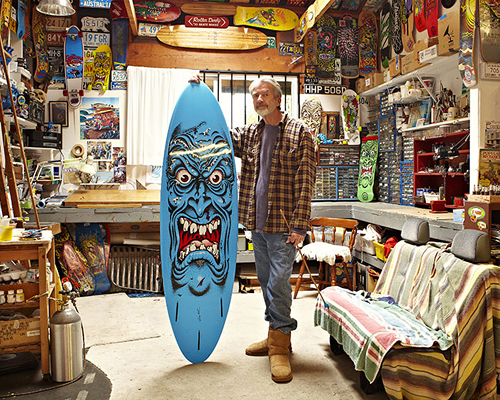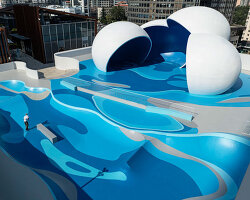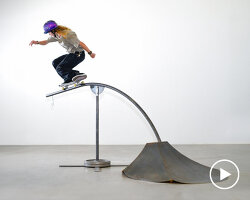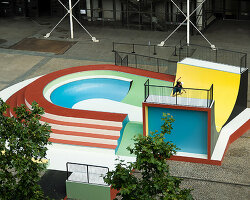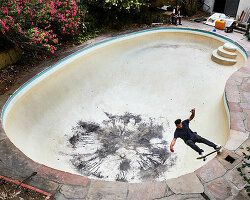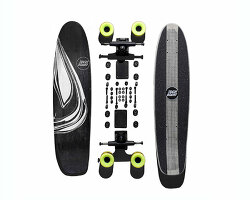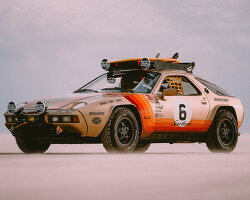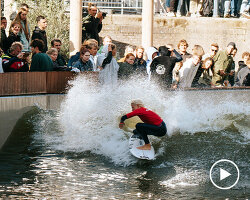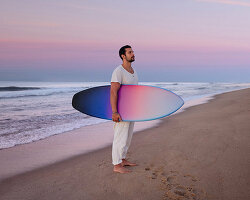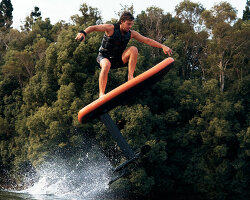jim phillips at his studio
photo by matt barnes
jim phillips was born in san jose, california, 1944. he’s lived most all his life in santa cruz, home of the skateboard brand of the same name, which phillips’ has helped forge a strong visual identity for since he began working there in 1975.
over the last four decades jim has created thousands of skateboard decks, t-shirt designs, stickers, and ads for santa cruz and other brands – his work becoming synonymous with american skate and surf culture in the process.
jim kindly spoke to us about his influences growing up, why practice makes perfect and some gives some sage advice for young artists.

santa cruz, slant logo, 1977
designboom: what was the thing that initially made you want to become an artist?
jim phillips: I grew up on army bases and we frequently moved. I went to eight different schools by the second grade so it was hard to catch up academically and I basically just gave up. since they give you paper and pencil and require you to be quiet, I spent my class time drawing. during those days, in the 40s, television was not yet available so to pass time at home and entertain myself I drew characters inspired from the newspaper funnies, and it set in motion my style and humor content. my grandfather heard about my drawings and sent me a book from the speedball pen company titled pen tips on cartooning, which showed various cartoons with illustrations of the various pens (pen tips) as if they were drawing each particular line. I bought my first bottle of higgins india ink and became good at drawing cartoons. through my early life it was the only thing I was any good at besides surfing so that later you could say I didn’t have many other options available to earn a decent living.
DB: what attracted you to abstraction and surrealism?
JP: for me, salvador dali, is the master of surrealism, and picasso, the master of abstraction. picasso was the smartest though, because he found a way to do great paintings in less than an hour. whereas it takes me days or weeks to accomplish anything of note.
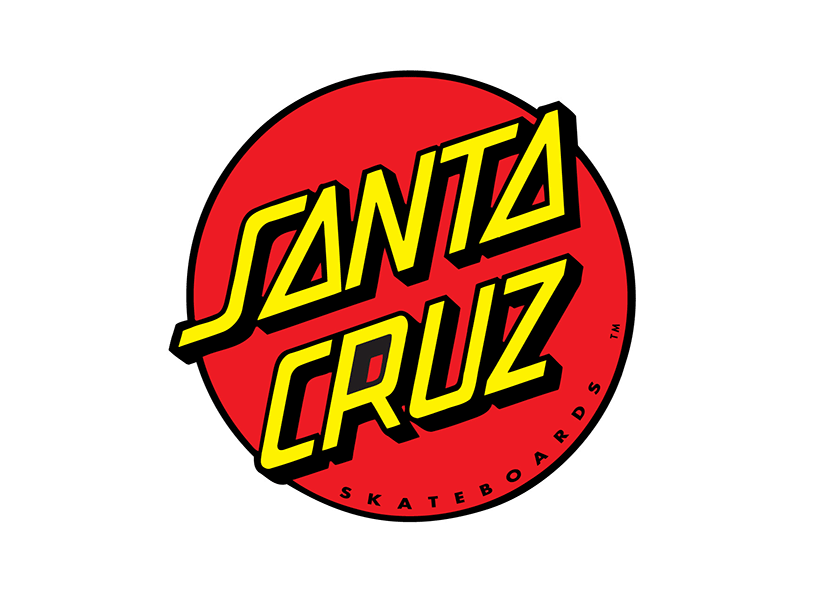
red dot santa cruz logo, 1978
DB: which project or period of your career have you enjoyed the most so far?
JP: my greatest joy was to have my own studio with a gaggle of studio artists under my training, as I had with phillips studios in the late 80s where we cranked out skateboard art for santa cruz skateboards. as a youth, the artists at walt disney studios such as carl barks and the famous ‘nine old men’ were some of my earliest inspirations and I loved to look at those old photos of walt standing with his artists in front of his studios, imagining who was who and what must have transpired within those walls.
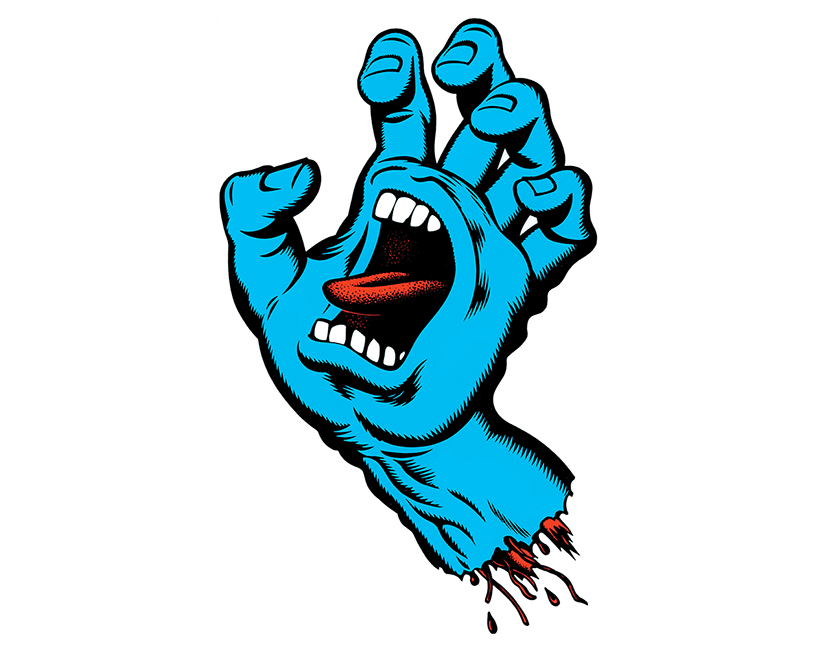
santa cruz ‘screaming hand’, 1985
DB: what criteria do you judge your artwork by?
JP: I had the great and humbling artists such as disney had and the masters of comic books from the golden age to live up to. it is a tall order and it shows that if you aim high and fall short you can still be something. the criteria that I was saddled with as a commercial artist was to first please myself, please the outside world and do it in the shortest amount of time for a limited amount of compensation. it is indeed a very tall order.
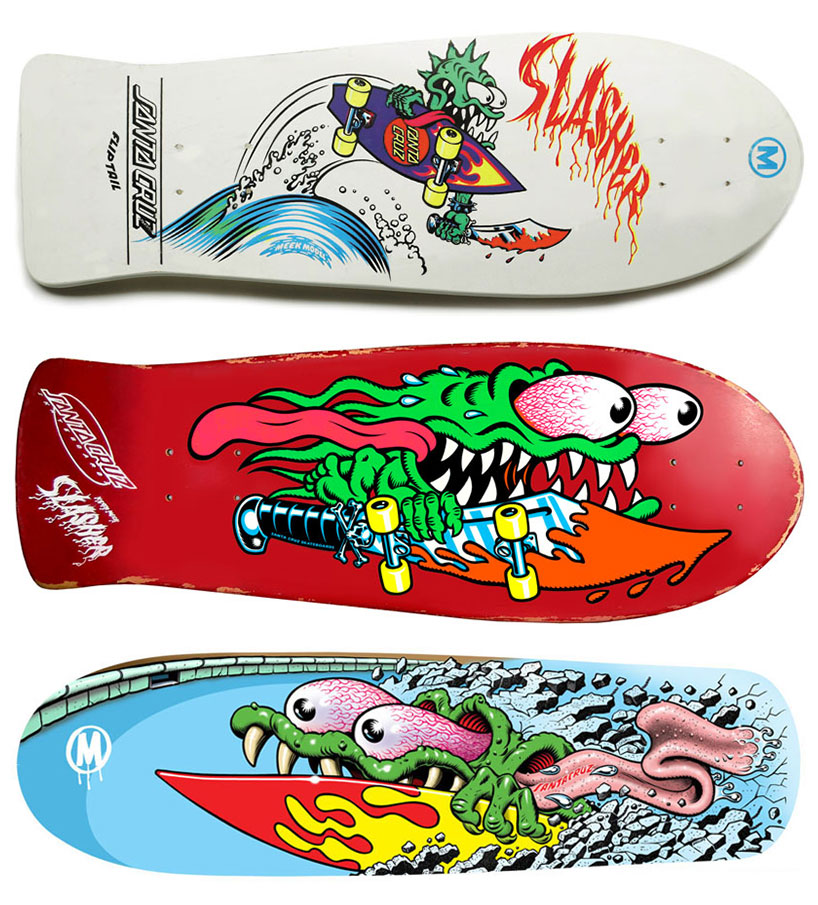
‘slasher’ skateboard decks for santa cruz
DB: how has the experience of working with your son, jimbo been?
JP: jimbo was 20 when he came to work in my studio as his first art job, and I was determined not to show preference to him over the others. I was not an easy boss and I had the weight on my shoulders of fifty million in sales that the company was grossing yearly although I only had a budget to hire lowly paid untrained young artists. it was a setup for a huge amount of stress and I would not coddle anyone under my control. if they did not do what I expected then I made them do it over. if they could not stand the heat then I showed them the door, or some just stopped showing up. jimbo stood the test and he learned to do things the way I wanted them. I’m very proud that he has continued in art and has forged his own unique style out of those golden years.
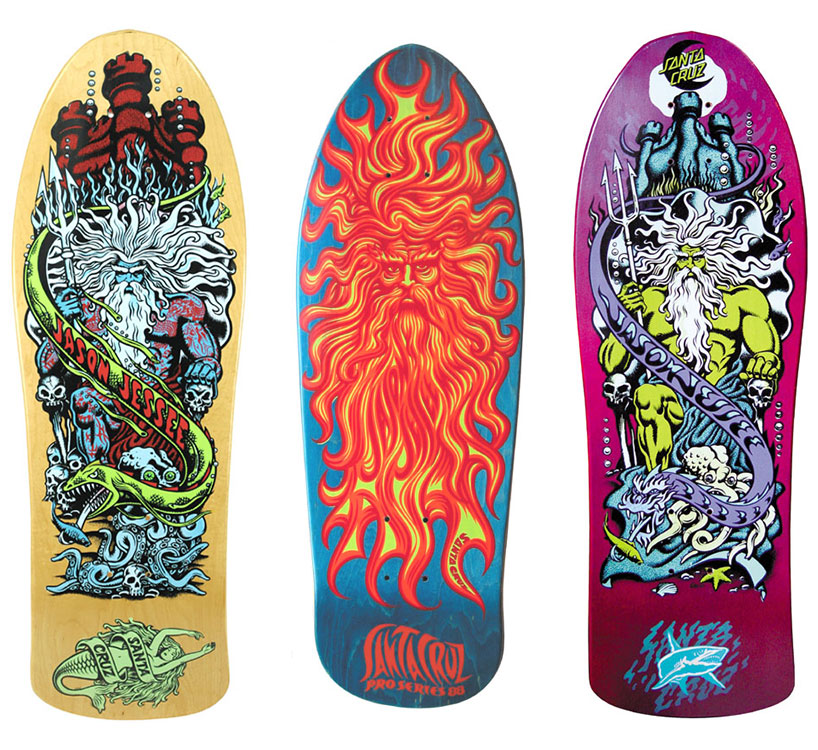
jason jesse skateboard decks for santa cruz
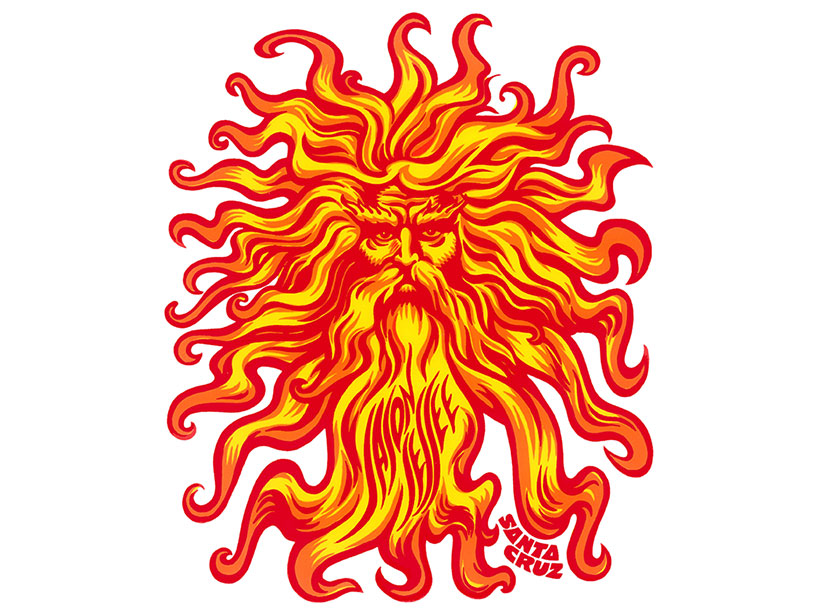
jason jesse sun sticker for santa cruz, 1988
DB: is it easier to produce quality work with the benefit of experience or is it always a case of trial and error?
JP: what you have mentioned is experience and experience is everything. ironically, as my turbulent early life led me to focus on art instead of schooling I gained artistic wisdom and knowledge from that lengthy experience and later that gave me a tremendous edge over my peers.
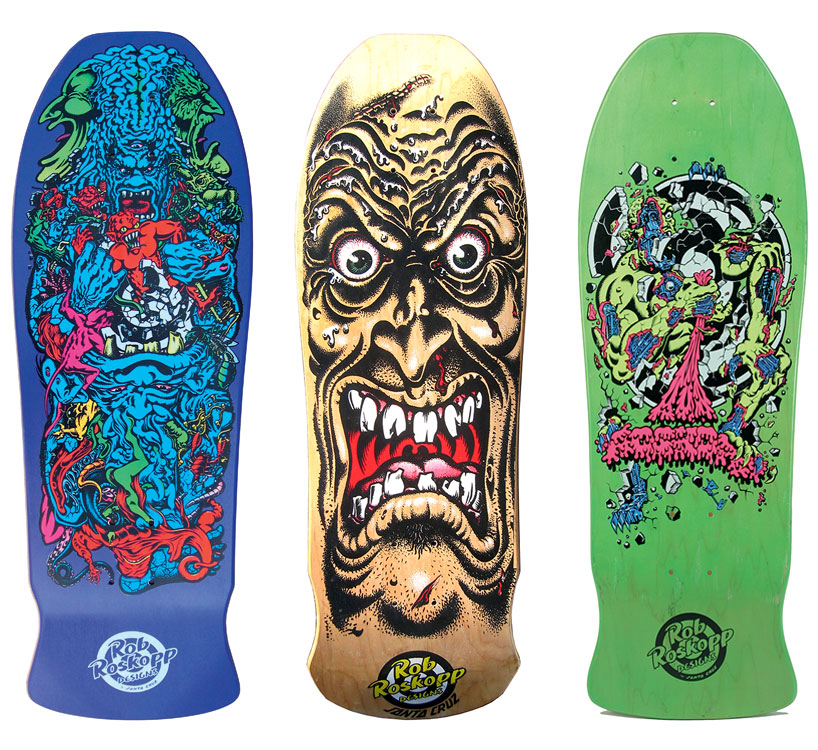
rob roskopp skateboard decks for santa cruz
DB: what do you do to keep your ideas fresh?
JP: king solomon said there is nothing new under the sun. that was three thousand years ago, and it’s still true to this day – there is nothing fresh. to make matters worse an artist must compete with every artist who ever lived because their works always remain and continue to be held up to the highest standards. the modern artist’s job is simply to fall in line and do the same old stuff, maybe in a new way, maybe with a twist, and hope for the best.
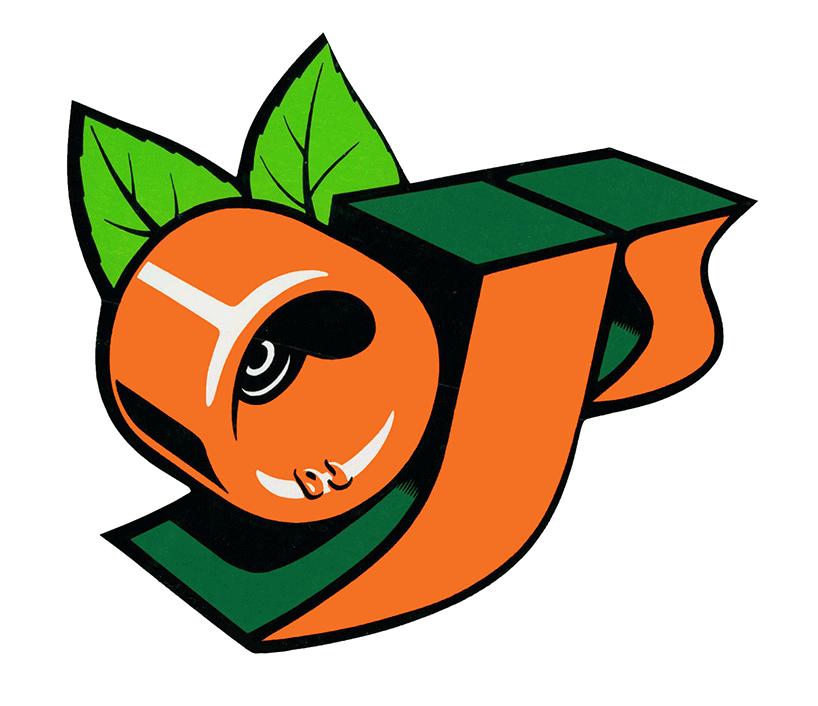
logo for OJ skate wheels
DB: what do you know now that you wish you knew when you were 21?
JP: when I turned 21 I was attending art school and naively studying fine art. in later years I had wished that I studied commercial art so that I could actually make a living. it was very difficult to learn advertising and commercial art on my own. after art school I went back to working at the surfboard manufacturing trade that I learned as a teenager, and was applying my art to surfboards. from that work I was offered a job in an in-house art studio for a motorcycle company, and I received advertising training on the job from the art director there and the demands of the work. after that company abruptly went belly-up I started my freelance art service doing the art for which I am known such as the skateboard work. but in hindsight my fine art training was invaluable and became a key to my success in commercial art.
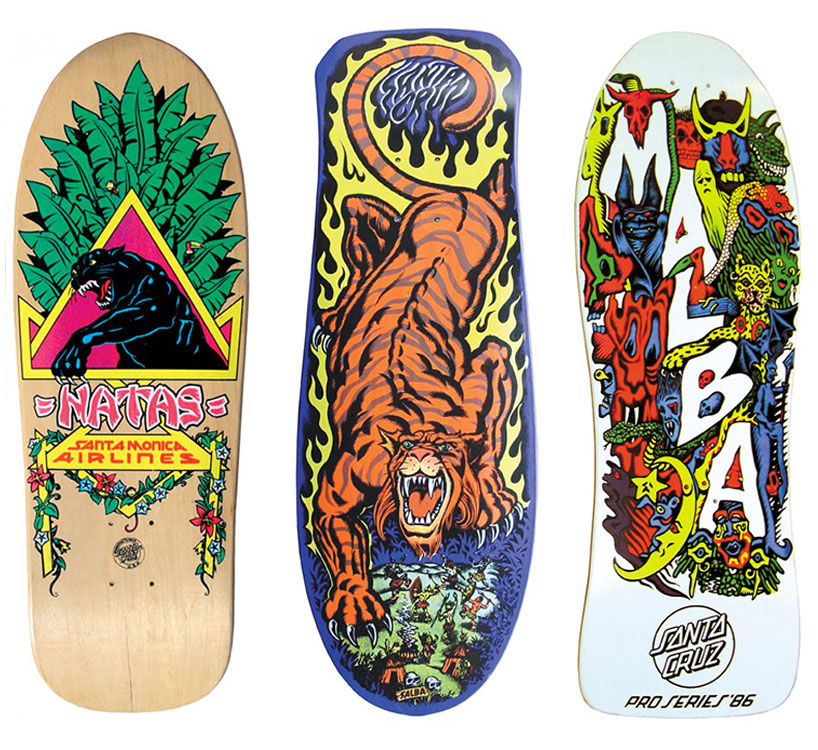
various santa cruz skateboard decks
DB: what advice would you give to young artists who are just starting out?’
JP: practice, practice, practice. there’s so much to tell but here’s a recent lesson I wrote to zak trevett, an incredibly talented 13 year old artist from the UK…
light is the most important element in painting, it makes shadows at the bottom and it makes highlights at the top, these elements define the form and keep them from looking flat. be careful not to overdo them. light source is usually coming from the top as the sun in nature, but a bottom-lit scene will evoke mystery, you’ve seen it in monster movie posters. secondary light is another light source usually coming from stage left or right and it will strike along the edges, also used in mystery/monster scenes. drop shadows are a shadows cast onto something else, like you see of yourself cast on the sidewalk. they give the illusion of three dimensions. don’t black them in unless it is a graphic, use complimentary (opposite) colors mixed into your paint, and keep them subtle.

lighthouse, sticker, 1976
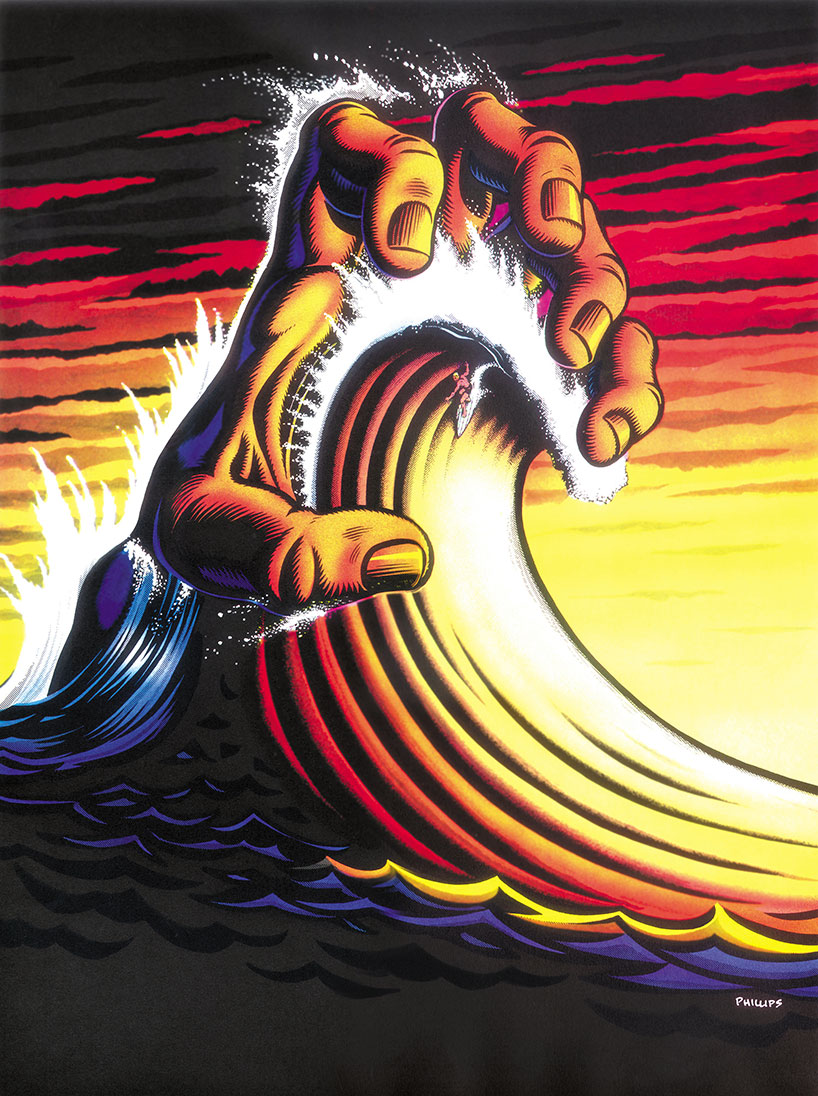
hand wave, surf crazed comics, 1992
DB: do you have any superstitious beliefs or self imposed ‘rules’ that you live by?
JP: no superstitions – I just try to live by the golden rule: ‘do to others as you would have them do to you.’
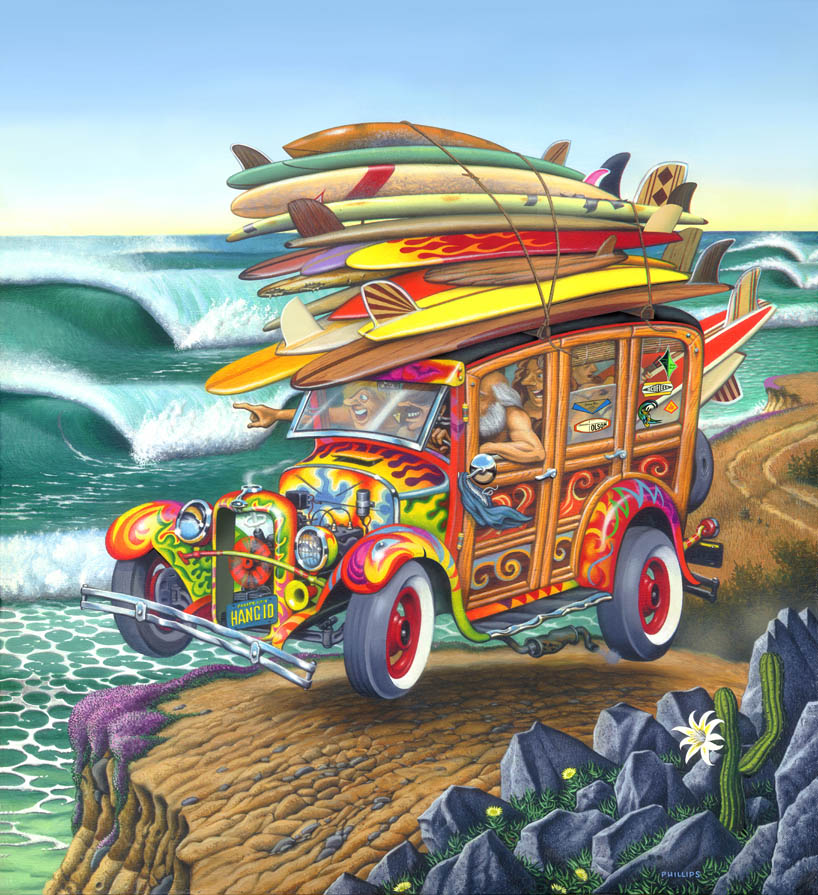
woodystock painting, acrylic, 1998
DB: what’s your personal motto?
JP: I’ve never had a motto, but picasso is known to have said, ‘it is your work in life that is the ultimate seduction.’ I would modify that slightly to ‘your work should be the ultimate seduction in your life’.
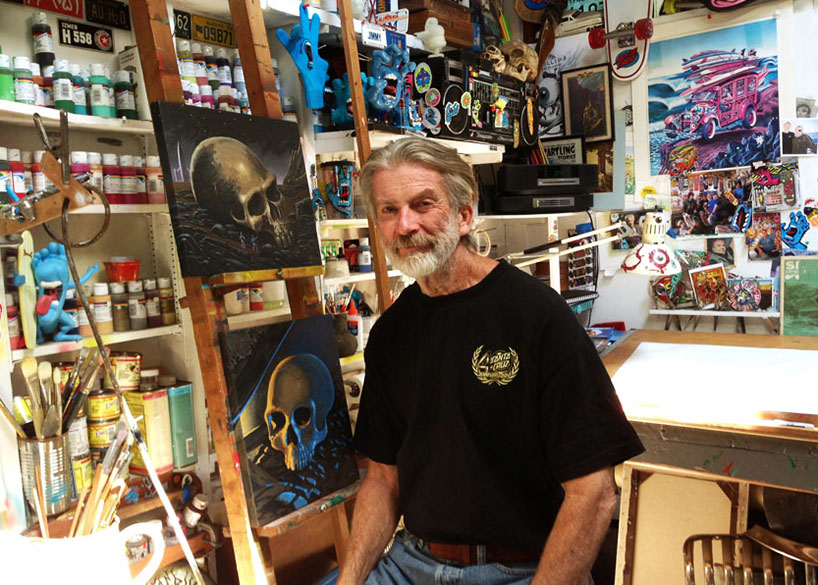
jim phillips at his studio in santa cruz
